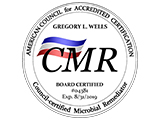 The brown marmorated stink bug, known to scientists as Halyomorpha halys, is native to Asia. It has been an agricultural pest in China, Japan, and Korea. Scientists think it was accidentally introduced into the United States.
The brown marmorated stink bug, known to scientists as Halyomorpha halys, is native to Asia. It has been an agricultural pest in China, Japan, and Korea. Scientists think it was accidentally introduced into the United States.
The adult brown marmorated stink bug is about ¾” long. Like other stink bugs, its body is nearly as wide as it is long. The adult is mottled brown in color. There are lighter bands on the antennae and dark bands on the front wings.
The stink bug has been found feeding on apples, peaches, blackberries, tomatoes, corn, soybeans, lima beans, and green peppers. Like other stink bugs, this pest pierces the skin of the fruit in order to feed. After feeding, the insect leaves. As the fruit continues to grow, it often develops a scar that looks like the face of a cat.
In late summer, the adult bugs gather on homes. The bugs are seeking sheltered places to spend the winter. They move inside the home through cracks and other openings. They spend the winter hiding inside the walls or in the attic or crawl space. When spring comes, the stink bugs become active. As they begin to move around, some of them emerge into the living space. Their size and the unpleasant odor that they emit when killed make them very unwelcome.
Homeowners can discourage the brown marmorated stink bug from entering the home by sealing as many entryways as possible. Cracks around doors and windows can be sealed with caulk. Vents in attics and crawl spaces can be protected with screen. Any torn or damaged window screens should also be repaired. Weather-stripping can help seal gaps under exterior doors.










